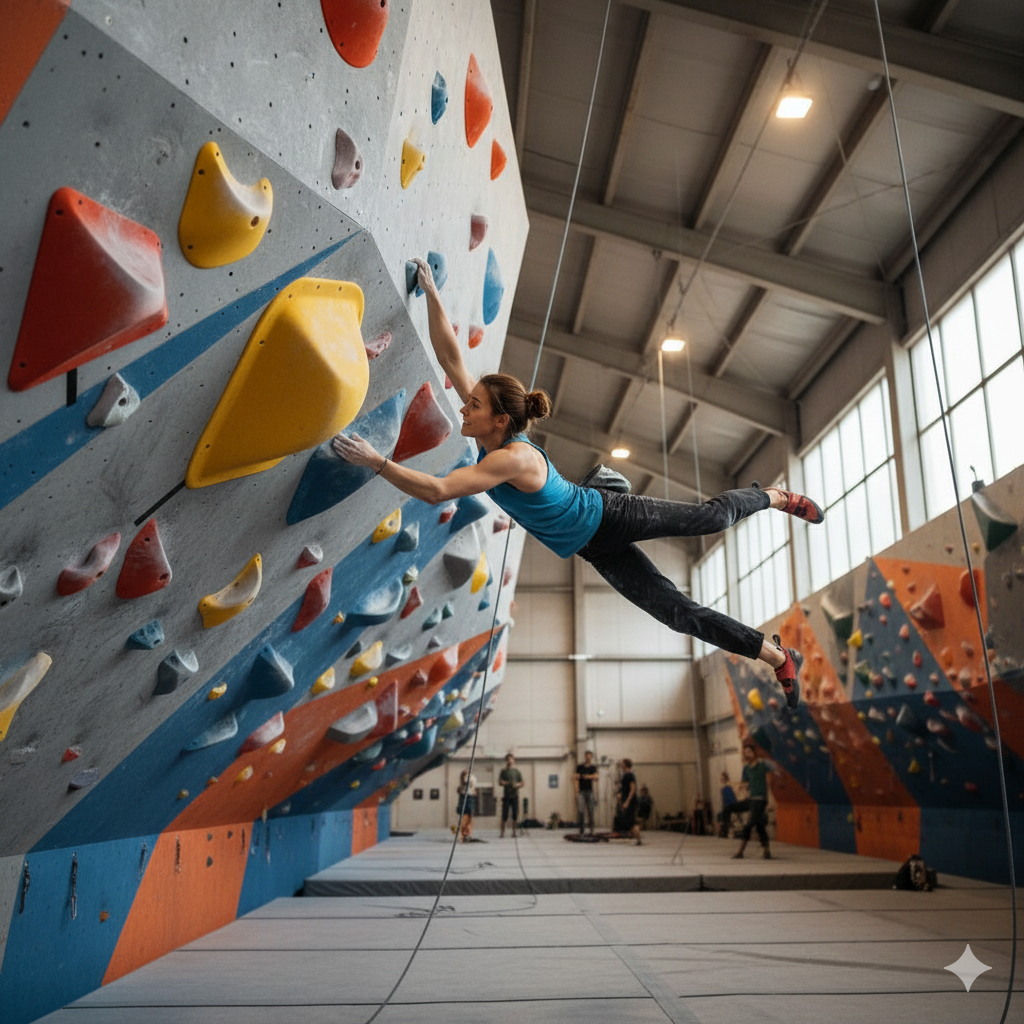
How to Condition Your Body to Be a Climber (Without Wasting Time)
Share
If you’re new to climbing or aiming to send harder grades, conditioning your body for climbing isn’t about getting “super strong arms.” It’s about developing a system of strength, endurance, mobility, and recovery — so you move better, last longer, and climb smarter.
This guide breaks down everything you need to know, backed by science and expert insights — made easy to read and apply, even if you’ve never trained specifically for climbing before.
🧩 The Short Version: What Matters MostRecent research on sport climbing performance shows that the biggest factors separating elite climbers from intermediates are:
- Finger and forearm strength and endurance — your “engine” for grip and recovery.
- Oxygenation and forearm recovery speed — how fast you clear the pump (study here).
- Efficient movement and pacing — learning to climb, not just to pull.
- Shoulder stability and mobility — to protect your joints and improve control.
Body composition (lean muscle vs. body fat) plays a role but isn’t the deciding factor — strength, endurance, and efficiency win every time (see review).
## 🧗♀️ **What Kind of Climber Are You?**| Discipline | Primary Energy System | Top Priorities | Example Sessions | Common Mistakes |
|---|---|---|---|---|
| Bouldering | ATP-PCr (alactic) | Max finger strength, pulling power, coordination | Limit boulders, weighted hangs, short campus sets | Too much volume, skipping shoulder prehab |
| Sport Climbing | Mixed: alactic, glycolytic, aerobic | Finger endurance, recovery, pacing | Repeaters, interval circuits, long routes | Neglecting aerobic base training |
| Trad / Multi-Pitch | Aerobic base + muscular endurance | Efficiency, movement economy, stamina | Zone 2 cardio, technique circuits | Over-focusing on max strength |
👉 For more on energy systems, check out Lattice Training’s breakdown.
💪 Build the Engine in Your ForearmsClimbers who recover oxygen faster between grips perform better — that’s proven by forearm oxygenation studies.
Try these 2–3×/week:- Power-endurance intervals – 60–90s climb, 60s rest, 4–6 reps.
- Repeaters – 7s hang / 3s rest ×6, 2–4 sets, large edge.
- ARC training – 30–40 min easy continuous climbing.
Hangboard training (fingerboard) is the fastest way to improve grip-specific strength — but only when done safely. The Eva López protocols (max hangs and intermittent hangs) are gold standards.
Start with large holds, bodyweight only, and progress slowly. Avoid aggressive crimping to prevent pulley injuries (pulley injury overview).
🦾 Pulling Power That Protects ShouldersPull-up strength and scapular control improve steep climbing and prevent injury. Use:
- Pull-ups: 3–5×3–6 reps
- Scapular pull-ups: 3×10
- Face-pulls & band external rotations: 3×15
Bonus: A 2024 pilot trial in female climbers found scapular stability training significantly reduced pain and improved control.
🧘 Mobility That MattersGood climbing mobility = hips and shoulders that let you move efficiently. Studies like this flexibility analysis show that climber-specific hip mobility directly supports higher steps and better wall proximity.
Quick routine (daily, 5–8 min):- 90/90 hip rotations
- Lateral squat rocks
- High-step openers
A good warm-up cuts injury risk and boosts performance. Use the RAMP approach:
- Raise – 3 mins skipping or jogging
- Activate – band pull-aparts, scapular pulls
- Mobilize – wrists, hips, thoracic rotations
- Potentiate – easy routes or light boulders
Fueling correctly supports adaptation and tendon recovery. Aim for 1.6–2.2g of protein per kg/day based on this large meta-analysis. Avoid under-fueling or RED-S (guidelines here) — consistent energy = better training results.
📅 Sample 8-Week Climbing Conditioning PlanSimple, flexible, and built for real climbers (not gym models):
- Day 1: Strength + Hangboard
- Day 2: ARC endurance session
- Day 3: Active rest or cardio
- Day 4: Power-endurance circuits
- Day 5: Pull + mobility
- Day 6: Project / climb day
- Day 7: Rest
- Skipping warm-ups (hello, finger tweaks!)
- Training too heavy too soon on hangboards
- Ignoring shoulder prehab
- Under-fueling while trying to “lean out”
Unlike traditional gym training, climbing requires isometric strength, finger load tolerance, and technique under fatigue. The research-backed routines above target exactly those systems — combining strength + endurance + oxygenation + recovery for sustained climbing performance.